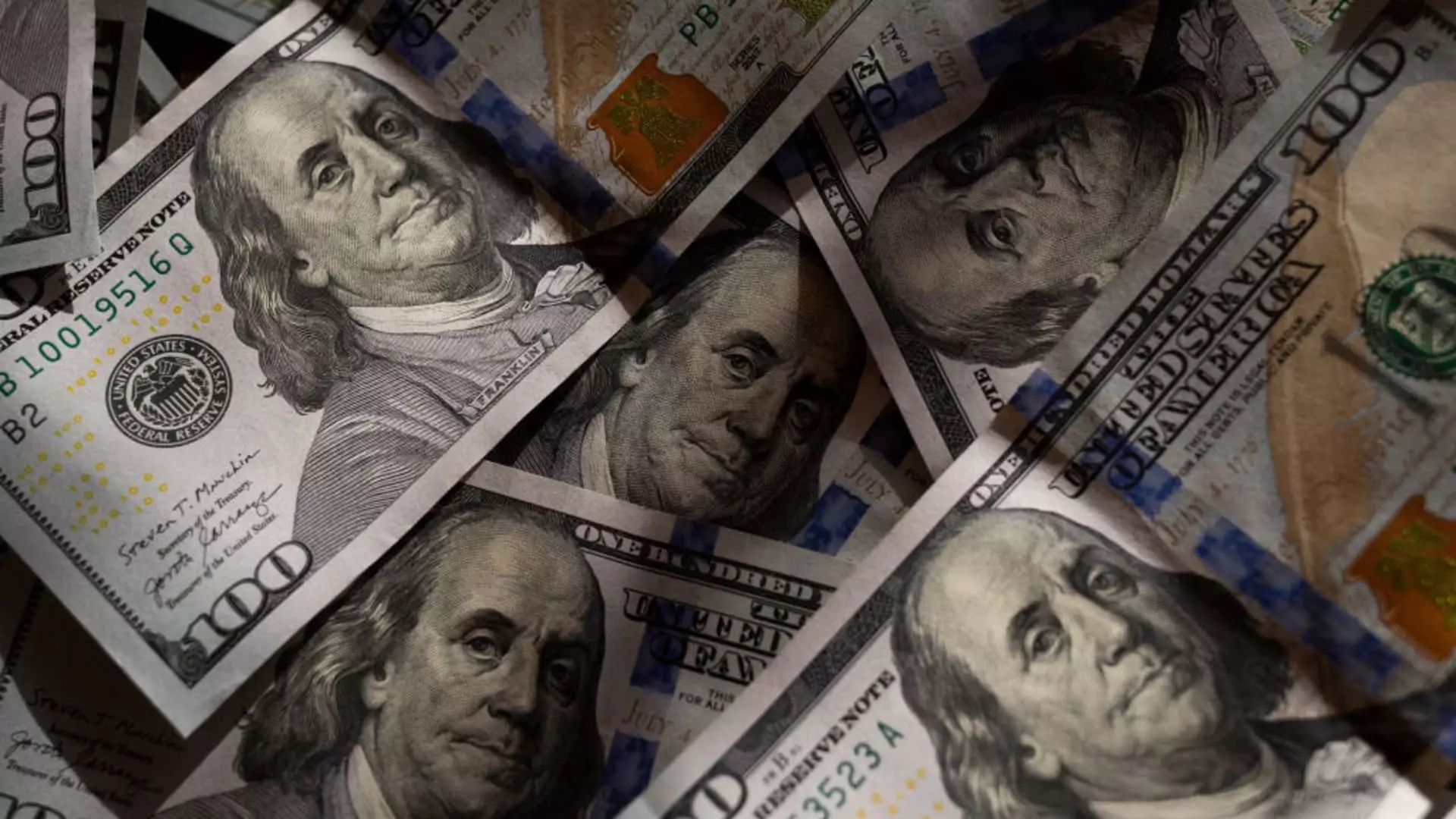In recent months, the U.S. dollar has been enduring one of its most significant downturns in decades. As the dollar index plummets more than 9% this year, a palpable sense of trepidation has emerged within the broader financial realm. This decline isn’t merely a reflection of market fluctuation; it’s permeated various economies, capturing central banks in a web of cautious optimism and persistent anxieties. A striking 61% of global fund managers foresee further depreciation in the dollar’s value over the next year, marking a wave of pessimism that has remained stagnant for nearly two decades. To say the dollar is in crisis may be an overstatement, but its fragility is undeniable.
The dynamics at play are far from straightforward. A weakened dollar tends to strengthen other currencies, from the Japanese yen to the euro, granting these economies a much-needed reprieve. However, this shift does not come without its own set of complications and contradictions, which may ultimately exacerbate global economic instability.
A Banquet of Mixed Blessings for Central Banks
For central banks across the globe, a depreciating dollar might seem like a cause for celebration. A chief currency analyst recently stated that most central banks would welcome a 10%-20% decline in the dollar’s value. This apparent “blessing” provides these institutions with greater leeway to cut interest rates, thereby stimulating economic growth. Countries with substantial U.S. dollar-denominated debt find themselves in a better position, as a weaker dollar may reduce their real debt burden, making repayments less daunting.
Yet, this jubilation is tempered by the pitfalls that could follow. As emerging markets grapple with the dollar’s ongoing decline, the prospect of increased inflation due to imported goods could hit economies hard, particularly in regions already waging war against inflation rates and crippling debt. When the dollar takes a hit, local currencies often soar, shining a spotlight on the precarious balance that central banks must navigate. While cheaper imports seem advantageous, they create an alarming strain on export competitiveness—one liable to unravel fragile economies already vulnerable to external shocks and U.S. trade policies.
The Dangers of Currency Wars
As the global economy teeters on the brink, the fear of currency devaluation becomes more pronounced, particularly in Asia, where countries depend heavily on exports. Strategies employed by nations to protect their currencies can easily spiral into currency wars. The complexities multiply when you consider that such actions can set off a chain reaction of retaliation. The already tense geopolitical landscape renders nations wary of appearing as currency manipulators, which raises the stakes unbearably high.
The fact that some emerging market currencies, such as the Vietnamese dong and Indonesian rupiah, have weakened despite the dollar’s decline, serves as a stark reminder of the hurdles facing these economies. Nations like Turkey, beset by unrest and poor economic statistics, face immense pressure as their currencies hit all-time lows. Analysts warn that these countries must tread carefully, drawing a fine line between devaluation as a necessary strategy and the potential for capital flight—the risk that wealth might flee to more stable economies, further exacerbating domestic challenges.
A Global Tipping Point
Fundamental changes drawing near to international trade negotiations could determine how nations react. Several countries have proactively engaged in diplomacy, possibly hoping for lower tariffs that would allow local currencies and economies to breathe. However, if tensions escalate and trade disputes intensify, central banks’ positions regarding currency valuation could drastically shift, further complicating an already wrought landscape.
The notion that external influences dictate the viability of currency strategies highlights the interconnected nature of our modern economy. Policy decisions in the U.S. can ripple throughout world markets—straining relationships while simultaneously forging new alliances. As nations weigh the risks of devaluation against the benefits, the overarching question remains: Can cooperation in monetary policy prevail against the destructive potential of a currency war?
In an age where economies are more intertwined than ever, the fate of the dollar may well serve as a litmus test for broader economic resilience. The delicate balance struck by central banks will undoubtedly define the paths these nations take moving forward. With the dollar no longer an unassailable stronghold, the future appears both precarious and ripe with unpredictable potential.


Leave a Reply